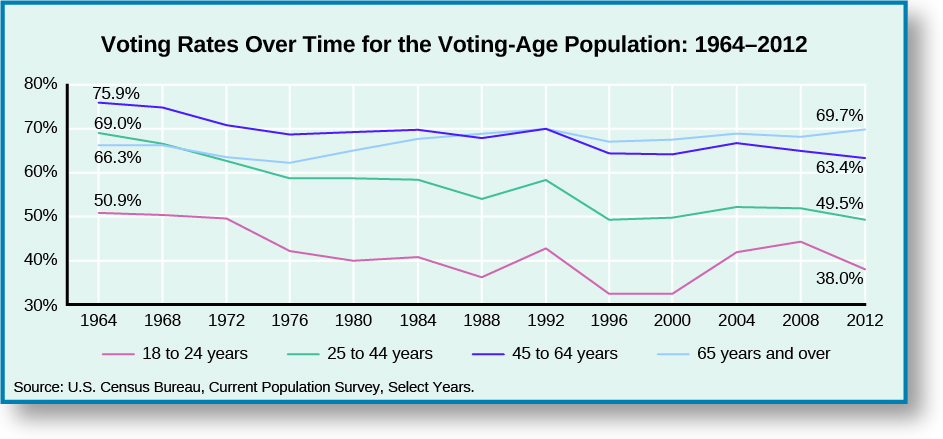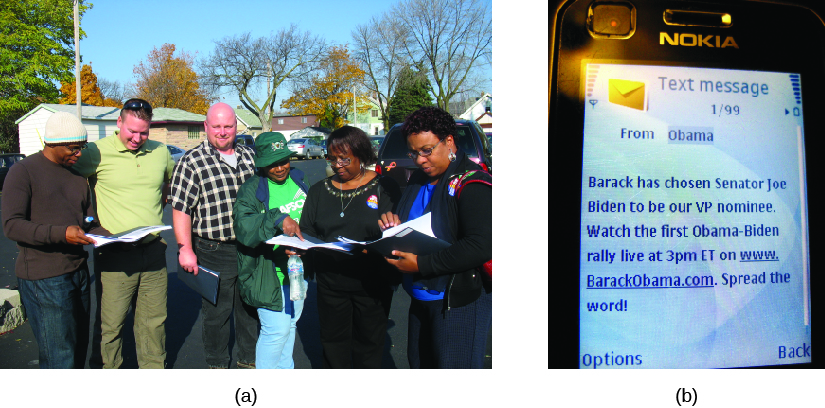| << Chapter < Page | Chapter >> Page > |

In 2008, for the first time since 1972, a presidential candidate intrigued America’s youth and persuaded them to flock to the polls in record numbers. Barack Obama not only spoke to young people’s concerns but his campaign also connected with them via technology, wielding texts and tweets to bring together a new generation of voters ( [link] ).

The high level of interest Obama inspired among college-aged voters was a milestone in modern politics. Since the 1971 passage of the Twenty-Sixth Amendment, which lowered the voting age from 21 to 18, voter turnout in the under-25 range has been low. While opposition to the Vietnam War and the military draft sent 50.9 percent of 21- to 24-year-old voters to the polls in 1964, after 1972, turnout in that same age group dropped to below 40 percent as youth became disenchanted with politics. In 2008, however, it briefly increased to 45 percent from only 32 percent in 2000. Yet, despite high interest in Obama’s candidacy in 2008, younger voters were less enchanted in 2012—only 38 percent showed up to vote that year.
What qualities should a presidential or congressional candidate show in order to get college students excited and voting? Why?
A citizen’s socioeconomic status—the combination of education, income, and social status—may also predict whether he or she will vote. Among those who have completed college, the 2012
voter turnout rate jumps to 75 percent of eligible voters, compared to about 52.6 percent for those who have completed only high school.
Race is also a factor. Caucasians turn out to vote in the highest numbers, with 63 percent of white citizens voting in 2012. In comparison, 62 percent of African Americans, 31.3 percent of Asian Americans, and 31.8 percent of Hispanic citizens voted in 2012. Voting turnout can increase or decrease based upon the political culture of a state, however. Hispanics, for example, often vote in higher numbers in states where there has historically been higher Hispanic involvement and representation, such as New Mexico, where 49 percent of Hispanic voters turned out in 2012.

Notification Switch
Would you like to follow the 'American government' conversation and receive update notifications?